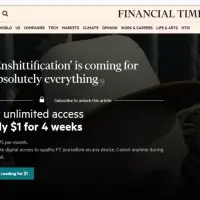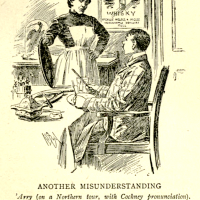 As much as we wonder about it, it’s a question that is not perfectly easy to answer. Long before technologically precise blockbuster films, Star Wars had cheesy lines, over-the-top acting, and zippers up the back of the monster’s costume. How many films just like it have found their way into the Betamax bins of history?
As much as we wonder about it, it’s a question that is not perfectly easy to answer. Long before technologically precise blockbuster films, Star Wars had cheesy lines, over-the-top acting, and zippers up the back of the monster’s costume. How many films just like it have found their way into the Betamax bins of history?
And those were originals! There aren’t many true fans who love all the feature films–the “trinal triplicities” and the two one-off films–not to mention Star Wars books and serials beyond count. Everyone has something that trips them up in the universe they love. For me, it is Hayden Christensen–the brooding emo-menace of Episode II. That role is worse, even, than the dead-on-the-production-floor film Ewoks in Las Vegas. Worse even than Jar Jar Binks, who I hate myself for kind of liking.
Yet, flaws and all, Star Wars lives. Not only lives, but thrives, growing in popularity as its universe of characters grows. While the Marvel Universe films have become the kings of the opening weekend, Star Wars is still a giant in a land of grasshoppers. Star Wars still beats out Harry Potter, Bond, The Lord of the Rings, and all the other comic book cinematic empires. It’s hard to beat the Japanese for pop culture or children’s entertainment for eager consumers. In total media franchise sales, Pokémon and Hello Kitty lead the world, with Winnie-the-Pooh and Micky not far behind. When it comes to total economic impact, even with the Netflixization of film, Star Wars continues to outpace Harry Potter and the Marvel Cinematic Universe combined (see the infographic below).
Let’s be honest: I still wish I had an ’80s classic Millennium Falcon. I lived in great envy for a great many years.
Why did Star Wars stick? If we are to believe the writers of That ’70s Show, it is the keen action and the super-duper special effects. But there is also something more. Watch the first little bit of the famous ’70s Show episode, “A New Hope.”
The entire episode is filled with nostalgia and hilarious throwbacks to the original series. Tugged as we are back to the 1980s by series like Stranger Things, the nostalgia continues to this day–from reproductions of Star Wars lunch boxes to celebrated Goodwill discoveries of Chewy pyjamas and broken lightsabers. Though it was almost lost in the incredibly painful second film of the prequel series, Attack of the Clones, the third episode, Revenge of the Sith, begins to recover the things we loved most about the original three.
Almost. It is still a painful, painful prequel. But the empire moved on with its own strengths and weaknesses in the sequel trilogy. Perhaps you disagree. The Last Jedi was a complex and perhaps failed film, though one I quite loved. The first two parts of the sequel are echoes or mirrors of the original series, and the Rise of Skywalker conclusion brings that saga to a close. Critics are mixed on the way the series concludes, but fans are deeply torn. The trilogy that concludes the Skywalker trilogy is cinematically brilliant, but the storylines don’t always land. Some of the characters brighten up and fill out that world, while others fall with a thud.
Personally, I think the Skywalker Saga was an excellent close to the 2010s–the decade of nostalgia that we now feel nostalgic for. I love these films, even as digital waggery and character-fails replace stage acting and zippers on costumes. I am content with what we have, even having loved the standalone Rogue One–you gotta love a director who has the courage to kill almost every character on his payroll. And although Ron Howard is always better with his partner Brian Grazer, Solo, one of the most expensive films ever made, deserved my $15.
I recognize that a lot of this is memory-building and nostalgia–no doubt enhanced by the fact that COVID-era filmmaking has been inconsistent. Nostalgia is pretty important right now.
But I don’t think that’s a problem. We see this in the tone set by the very first J.J. Abrams episode, The Force Awakens. Predictably, it was filled with nostalgic moments:
“Chewy, we’re home.” Classic.
Über critical fans did not like it, I think. To them, it looked like a commercial grab for the fans of the past blended with a technological capability George Lucas could only have dreamed of. Personally, I loved the new characters and think the visual technologies have finally found their home.
There are problems with the logic of the series and the storylines. Star Wars still fails to answer its own question of providential luck–characters in The Force Awakens find each other across staggering distances or in buildings of near-infinite complexity–and Rogue One, despite its apocalyptic air, still carries that part of the myth on. But I like how the final trilogy is paced, and although there are huge gaps, and a gaff or two, it fits well into the Star Wars universe. More than nostalgic, The Force Awakens is framed up like a remake of A New Hope.
Imperial-class Star Destroyers wrenched into the sands of an alien world, Darth Vader’s mask from the flames, R2D2, the ping-pwang of laser fire: nostalgia, certainly. The deconstruction of the old series in The Last Jedi only adds to the nostalgia, even as it usurps it. But, nostalgia for what? There has to be something at the core of the series beyond cheese and lights. Why has Star Wars stuck with us?
I think the answer is hidden in this long-lost trailer from 1977.
In the days after Saturday Night Live and Spaceballs and The Simpsons, it’s hard not to imagine going into the theatre in 1977 and expecting a spoof. Perhaps we’ve lost our innocence as a culture these days.
And it is also easy to forget how far the art and science of special effects has come. When you live in a generation where you can use shareware software to stage an at-home lightsabre battle for Youtube, 20th-century effects won’t impress us much. Think of Hugo, The Life of Pi, Inception, The Jungle Book, and Harry Potter–an almost random collection of films from the last decade from five different genres that have special effects unlike anything imagined by the human race in my childhood. And the acceleration just keeps accelerating.
 But it isn’t just effects is it?.
But it isn’t just effects is it?.
The films that visually impressed me the most growing up–Toy Story, the Lord of the Rings trilogy, The Matrix, Shrek, and, more recently, Inception–had more to them than technology. 2012 is a good example of a film with no story and a pretty dumb premise but pretty good effects.
No, I think the reason we love Star Wars is that it goes deeper into our cultural consciousness than we can imagine. Look at the stunning statements made by the trailer:
“an adventure unlike anything on your planet”
“the story of a boy, a girl, and a universe”
“a big, sprawling space saga of rebellion and romance”
“it’s a spectacle light years ahead of its time”
“it’s an epic of heroes and villains and aliens from a thousand worlds”
“a billion years in the making: Star Wars”
Then the flash of light.
 George Lucas is, I think, at the deepest level, a mythmaker. He certainly is a genius SciFi world-builder. He takes the universe-changing work of Larry Niven and Frank Herbert to a new level with his own mythic Empire. But while Ringworld and Dune are set in the future, Star Wars, like The Lord of the Rings, is set in the deep past.
George Lucas is, I think, at the deepest level, a mythmaker. He certainly is a genius SciFi world-builder. He takes the universe-changing work of Larry Niven and Frank Herbert to a new level with his own mythic Empire. But while Ringworld and Dune are set in the future, Star Wars, like The Lord of the Rings, is set in the deep past.
Star Wars isn’t just adventure. Star Wars is mythology.
In this sense, I think that as much as George Lucas relies on the SF masters, he is also a deep reader of the master myth-maker: J.R.R. Tolkien. Tolkien understood the project of mythopoiea at the most intimate level, shaping Middle-earth out of a worldview that is entirely consistent with itself. Moreover, Tolkien’s project does what myth always does: it tells us about the present world. Myths are never really buried in the past. True myths, the good ones, will resonate again and again through cultures that appear long after the myth-making culture has slipped into legend.
That is why I think Star Wars has lasted. Beyond big names and big budgets and super-duper effects, when you watch Star Wars you get the sense that it really is a film “a billion years in the making.” It is a story that tells all our stories, a myth speaks to us today. For all their flaws, I think Rian Johnson and J.J. Abrams get the myth in us.
At the centre, then, it is not just about nostalgia–which is no bad thing–but about our deepest realities of being human. May the 4th be With You always!
Plus, this is amazing:
The Infographic from TitleMax, which needs to be update:
























Pingback: Why Did Star Wars Stick? #MayThe4thBeWithYou #StarWarsDay – Glyn Hnutu-healh: History, Alchemy, and Me
I’ve read one thing and another about George Lucas and Tolkien and Joseph Campbell (and for that matter, the 1939 Wizard of Oz and Lucas’s further mastery of movie history and effective evocations and borrowings) and think you are right, here – and also about his being “a genius SciFi world-builder.” I suspect a lot of the popularity of Star Wars despite various aspects of prequel – and post-Lucas – may have to do with this world-building. I have read very little of the ‘licensed fiction’, but there has been a lot of it, and it has sold, one way and another (I wonder if anyone has charted it?) – e.g., we have read some of the contributions to John Whitman’s Galaxy of Fear series en famille in Dutch translation. Maybe the appeal of the original trilogy plus the varied licensed ‘world-building’ spin-offs (including, as Yogurt says in Spaceballs “merchandizing”) contributed a lot to the ‘continuing popularity despite X, Y, Z, etc.’ (including the various ‘de-canonizing of the previously licensed’!).
But I would sure like to see the original trilogy with the original John Dykstra special effects, again.
Hi David, I have missed so many great comments! I am digging my way out of correspondence prison, I believe. “Merchandizing!” Yes, loved that as a kid. I have watched the de/reverse digitized version of the SW Trilogy, but I’m sure that person pirated it. One of my brother-in-laws, both SF/Star Wars smart.
Pingback: A Brace of Tolkien Posts for his 132nd Birthday (#TolkienBirthdayToast) | A Pilgrim in Narnia